
Two-Factor Badging™!
Stop card reader rip and replace!
Watch how VerifyMYBADGE™ protects your current investment.
Enhance infrastructure security!
- You can keep your Card Readers
- You can keep your Systems
- You can keep your Photo ID Badges

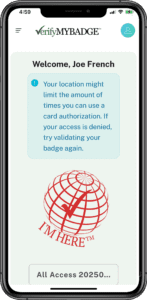
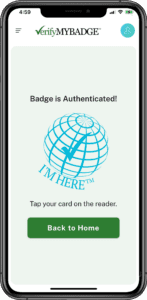
Verify My Badge™ app is a 2FactorBadging™ process.
- Generate an I’m Here™ Certificate from your mobile device’s VerifyMyBADGE app
- Present the badge to the card reader
- The card will either authenticate, open the door, or clock you in, or open the parking gate….or not if the card is not valid
How does 2FactorBadging™ work?
- Upon selecting the I’m Here™ Certificate upon arrival, a certificate is placed in a customer-determined time-sensitive state.
- The badge is presented to the reader, and the system record is validated against the valid Certificate, keeping the record in an active state.
- The door opens normally as long as the certificate has not timed out.

2FactorBADGING™ Engagement Types:
Pre-Authorization
-
Proactive Verification: Users generate a certificate in the VMB app while approaching the reader, requiring only badge presentation for entry.
-
Flexible Expiration Rules: Certificates can be configured with extended expiration times for internal or low-risk readers.
-
Dynamic Security Policies: High-security readers can be configured with short expiration windows or require post-authorization.
-
Fast and Convenient: Reduces friction for authorized users while maintaining strong identity verification.
Post-Authorization
-
Badge + App Validation: After presenting the badge to a reader, the cardholder uses the VerifyMyBadge™ app to generate an I’m Here Certificate™ for instant access approval.
-
Ideal for High-Security Areas: Adds a second layer of verification for sensitive or restricted locations.
-
Time Tracking: Useful for logging critical events such as an initial time clock punch.
-
Triple Verification: Confirms the presence of badge holder, badge, and mobile device in real-time during the transaction.
VerifyMyBADGE™ Features Coming Soon Include:
- Geofence Enabled: This feature allows the I’m Here Certificate™ to be generated based on a specific set of rules once a device is recognized and authenticated.
- Push Notifications: When the badge is presented to the reader, and the request is denied, the VerifyMyBADGE™ backend will send a pop-up notification to the VeryMyBADGE™ app. If the app is not enabled, an SMS notification will be sent instead, prompting the user to create the I’m Here Certificate™.
- SMS Messaging: Text messages will be used for mobile devices that have not yet downloaded or have access to the VeryMyBadge™ app for any reason. Additionally, SMS can serve as a secondary notification process unrelated to certification.

What is the Veonics ECOSYSTEM™?
- Unified Identity Management
The Veonics ECOSYSTEM™ connects all systems that use ID badges—such as access control, time tracking, visitor management, and badge creation—into one integrated identity platform. - Single Source of Truth
It ensures that identity data, photos, and credentials remain accurate, secure, and up-to-date across every connected system. -
Revolutionary Security Technology
The Veonics ECOSYSTEM™ was created to host our industry-first 2FactorBADGING™ process using our VerifyMyBadge™ mobile app. Veonics enhances security without requiring costly badge readers, cards, and system upgrades.

Top 5 Highlights of the Veonics NEXUS Database Engine
-
One Identity Source of Truth
Veonics NEXUS centralizes all identity data—names, photos, card numbers, departments, titles, and status—ensuring every connected badge and reader system uses accurate, up-to-date information. -
Seamless System Integration
It synchronizes and connects data through a robust API across all subscribed card-reader systems, including access control, time clocks, visitor management, and point-of-sale platforms. -
Bi-Directional Data Flow
Changes made in any system (e.g., badge updates, photo replacements, or status changes) are instantly reflected across all connected systems, eliminating data mismatches and duplicates. -
Scalable & Secure Architecture
Veonics NEXUS is built on a powerful PostgreSQL engine, designed to manage very high volumes of identities and transactions with enterprise-level security and reliability. -
Future-Ready Identity Management
As the backbone of the Veonics Ecosystem, NEXUS powers advanced tools like VerifyMyBadge™ and 2FactorBADGING™, enabling stronger security and extending the life of your existing badge and reader infrastructure.
A Day in the Life of a Hospital Associate
 Two-Factor Badging™ for a Hospital Nurse
Two-Factor Badging™ for a Hospital Nurse
At 6:45 a.m., Emily, a registered nurse at St. Claire Medical Center, pulls into the employee parking lot. She opens the VerifyMyBadge™ (VMB) app on her phone while waiting at the gate. Because this entrance uses Pre-Authorization, she has up to 90 seconds to present her badge after generating her “I’m Here Certificate™.” When she reaches the reader, a simple badge tap opens the gate—no need to fumble with her phone.
Once parked, Emily walks to the staff entrance. Since her presence was already verified at the gate, she can access internal doors by just tapping her badge—thanks to a four-hour access window granted through her earlier verification. There’s no need to use her phone again unless that window expires or she enters a high-security area.
At 7:00 a.m., Emily heads to the time clock for her shift punch-in. Because the hospital requires Post-Authorization for clock-ins, she taps her badge and is prompted to confirm her identity using the VerifyMyBadge™ app, instantly generating a one-time “I’m Here Certificate™.” This ensures that it’s truly Emily—her badge, her phone, and her presence—starting the shift, not a co-worker clocking in for her.
Throughout the day, Emily can move securely through patient wards, medication rooms, and staff-only areas—all without needing to upgrade her badge or the hospital’s existing badge readers.
Key Takeaway
With Two-Factor Badging™ powered by VerifyMyBadge™, St. Claire Medical Center boosts security without replacing existing badges or badge readers. It ensures that access is tied to the person, not just the plastic badge, minimizing the risks of badge theft, sharing, or misuse—while keeping daily operations smooth and staff frustration low.

Two-Factor Badging™ for a Hospital Physician
Dr. Patel arrives at Riverside General Hospital just before his 7:30 a.m. rounds. While sitting in his car at the employee lot entrance, he opens the VerifyMyBadge™ app and taps to generate an “I’m Here Certificate™.” Because the parking gate supports Pre-Authorization, he doesn’t have to stop and fumble with his phone when he reaches the reader. He taps his existing badge, and the gate opens—smooth, secure, and efficient.
Once inside, he enters through the staff entrance. Since his presence was already confirmed at the gate, he can walk through internal doors just by presenting his badge. The hospital has configured those readers to accept access for the next four hours, meaning he won’t need to use his phone again during that time unless accessing restricted areas.
Later that morning, Dr. Patel needed to enter the pharmacy storage room, which holds controlled substances. Because this is a high-security zone, the system requires Post-Authorization. He taps his badge at the door, then quickly confirms his identity in the VMB app to generate a one-time “I’m Here Certificate™.” The door unlocks only after confirming that Dr. Patel, his badge, and his phone are all present—providing strong protection against misuse or unauthorized access.
He continues his rounds, effortlessly accessing patient care areas and team meeting rooms with just his badge. Even though he’s using the same badge and readers as before, he and the hospital benefit from a much higher level of security—all without needing new hardware or issuing new credentials.
Key Takeaway
With VerifyMyBadge™ and Two-Factor Badging™, Riverside General adds intelligent, flexible security layers to existing badge systems. For staff like Dr. Patel, it means stronger identity protection, streamlined access, and zero disruption to their demanding schedules—all while avoiding costly infrastructure upgrades.

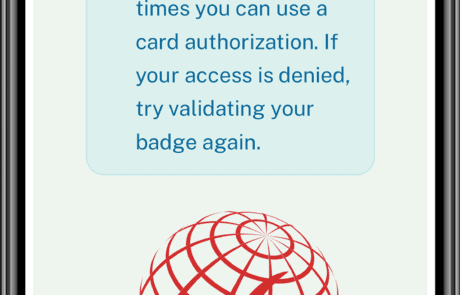

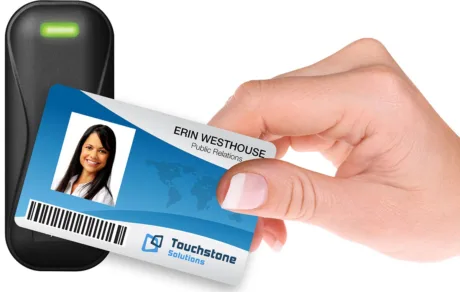
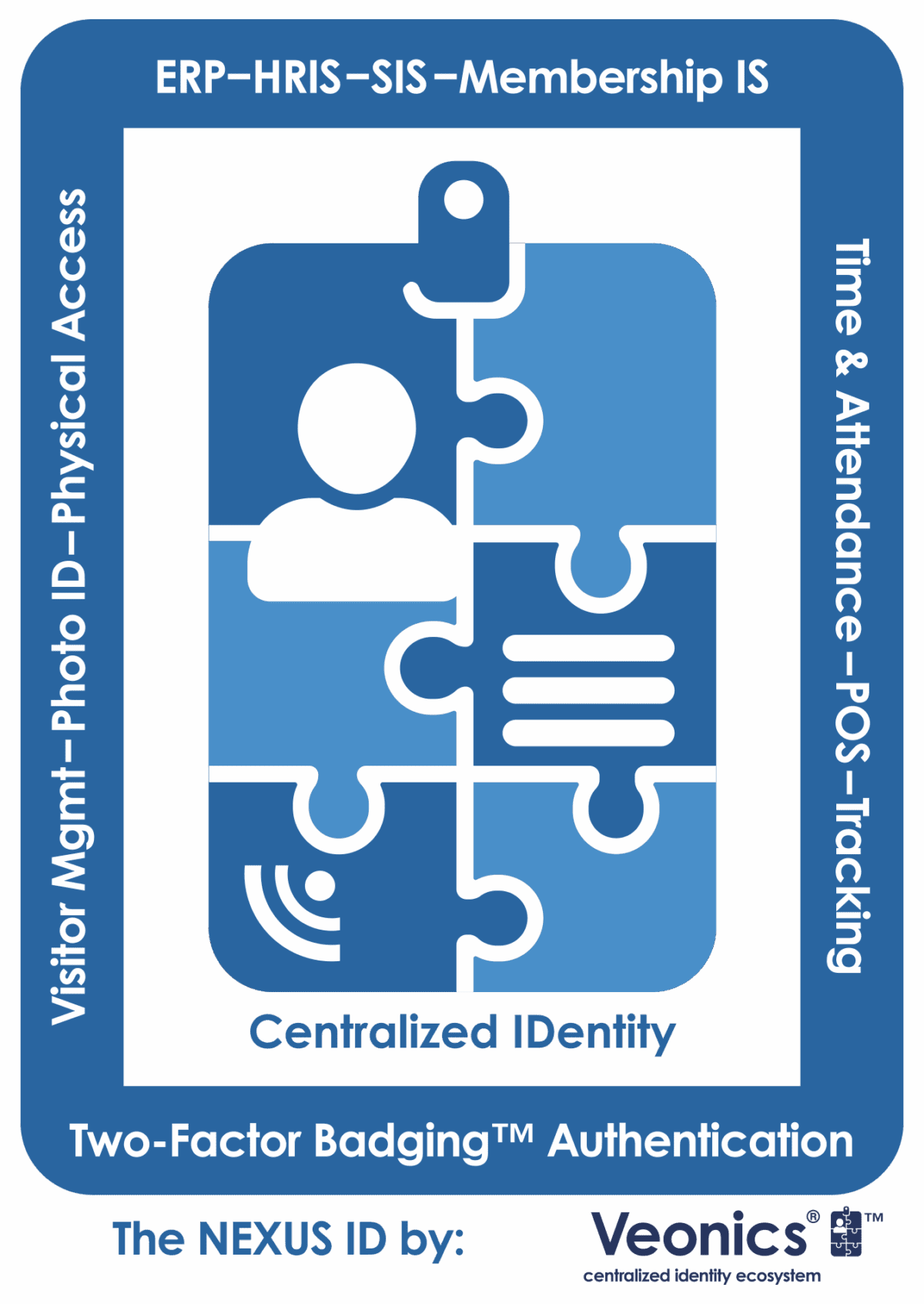

 Two-Factor Badging™ for a Hospital Nurse
Two-Factor Badging™ for a Hospital Nurse